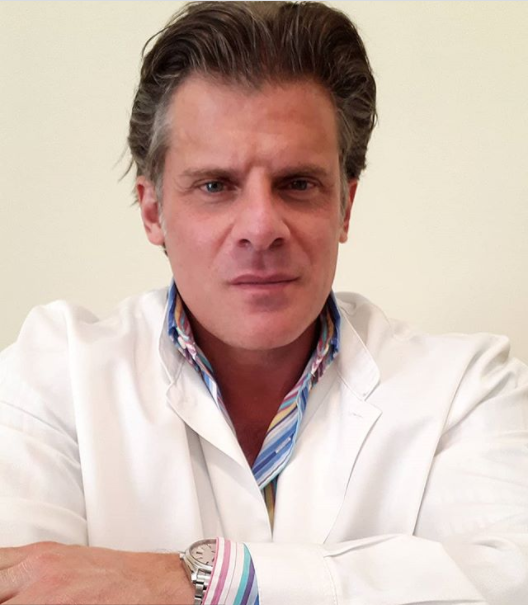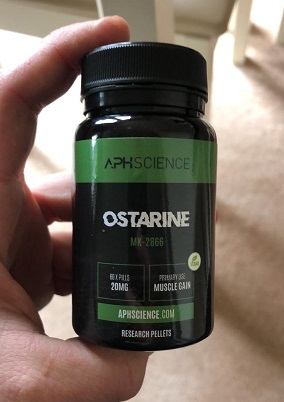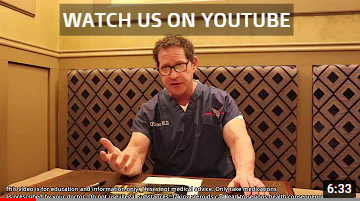Ostarine PCT: Optional or Essential?
 Disclaimer: Only researchers are authorized to administer SARMs, as they are not FDA-approved for cosmetic use and may have adverse effects. Dr. Touliatos is available for consultation should readers have any questions or concerns.
Disclaimer: Only researchers are authorized to administer SARMs, as they are not FDA-approved for cosmetic use and may have adverse effects. Dr. Touliatos is available for consultation should readers have any questions or concerns.
Ostarine (MK-2866) is a SARM typically utilized by beginners to build lean muscle and burn fat.
Post-cycle therapy (PCT) is commonly implemented by users after taking SARMs or anabolic steroids in a bid to resurrect decreased endogenous testosterone levels while increasing:
- Testicular size
- Energy
- Quality of mood
- Muscle retention
- Libido
PCT is considered by some to be unnecessary after taking Ostarine, with it having a reputation of being a mild SARM. Researchers have found Osarine to be “well tolerated” during clinical trials (1, 2). However, endogenous testosterone levels can drop significantly during any SARM cycle, including Ostarine. Therefore, it can be advantageous for researchers to have an effective PCT protocol ready.
Contents
Can Ostarine Lower Endogenous Testosterone?
Everyone is different when taking SARMs; thus, despite Ostarine’s renowned mild nature, some scientists can observe moderate suppression from it.
If endogenous testosterone levels drop notably, bodybuilders will shift into a catabolic state post-cycle, experiencing:
- Worsened mood
- Less energy
- Reduced libido
Subjects who have never taken SARMs, prohormones, or anabolic steroids may be more susceptible to bigger drops in endogenous testosterone when taking Ostarine than someone whose body is already accustomed to performance-enhancing drugs.
As users can respond differently to Ostarine, we recommend getting blood work completed before, during, and after a cycle. Depending on how acutely or severely endogenous levels fluctuate, such test results will give an insight into whether PCT is necessary.
It is worth noting that if a user does experience modest drops in endogenous testosterone from Ostarine, such damage to the HPTA (hypothalamic-pituitary-testicular axis) typically returns to normal several weeks post-cycle even without PCT. However, research indicates that this recovery process can be shortened with efficacious medications (3).
How Suppressive is Ostarine?
One of our patients experienced a dramatic drop in testosterone levels from Ostarine, recording 911 ng/dL pre-cycle and 113 ng/dL post-cycle. Clinically, testosterone levels below 300 ng/dL are diagnosed as hypogonadism. This was following a 10-week cycle at 20 mg/day, which is a standard-dose Ostarine cycle.
Another male patient took 20–30 mg/day of Ostarine for 2 months, with his testosterone levels dropping from approximately 600 ng/dL to 200 ng/dL.
We also observed a male’s testosterone levels drop from 665.70 ng/dL to 207.49 ng/dL after 32 days on a dosage of 5 mg/day.
User Review
I’m 53 and nearing the end of a cycle (Ostarine 30 mg, RAD 140 10 mg, and Cardarine 20 mg). I went and got bloodwork done in anticipation of planning a PCT. Good news: liver, kidney, and lipids are all good in a normal healthy range. Bad news: testosterone level is 13! My doctor said it was the lowest he had ever seen. He prescribed me testosterone cream, 1 gram daily.
Ostarine PCT
Users who are experiencing moderate suppression of 30–50% during their cycle can proceed with the following protocol, accelerating HPTA recovery.
Moderate PCT
- Weeks 1–4: Nolvadex 20 mg/day
Users are advised to start taking Nolvadex immediately after cycle cessation, with their testosterone levels set to recover within 30 days.
Nolvadex is a SERM (selective estrogen receptor modulator), and thus, by inhibiting the effects of estrogen, higher levels of LH (luteinizing hormone) are produced by the pituitary gland. Consequently, this has a stimulative effect on endogenous testosterone levels, raising them back to normal levels.
In harsher cases of 60–70% drops in testosterone, users may opt for 40 mg/day of Nolvadex for 4 weeks, although this is an aggressive PCT and unnecessary for most Ostarine users. If a user is taking 20 mg/day of Nolvadex and endogenous levels are not improving after 2 weeks, an increased dose of 40 mg/day will be beneficial.
If users have taken Ostarine in a stack containing other suppressive SARMs, they can add Clomid (clomiphene) and hCG (human chorionic gonadotropin) to their PCT stack for extra potency—alongside Nolvadex.
Studies have shown that Clomid stimulates GnRH (gonadotropin-releasing hormone), which increases LH via the pituitary gland, effectively increasing natural testosterone production (4).
HCG serves as an analog of LH, increasing:
- Testosterone
- Spermatogenesis
- Testicular hypertrophy (5)
Aggressive PCT
- Nolvadex: 40 mg/day, 20 mg x 2, taken continuously for 45 days.
- Clomid: 100 mg/day, 50 mg x 2, taken continuously for 30 days.
- HCG: 2,000 IU, taken every other day for 20 days.
We find the above PCT to be optimal for users who are severely shut down, such as those with 70% decreased testosterone, and are experiencing negative side effects, including depression, lethargy, and no libido.
The above PCT protocol was designed by Dr. Michael Scally, a hormone replacement specialist, who administered this trio to 19 hypogonadal men in a clinical trial. He successfully restored normal testosterone function in 100% of the men within 45 days.
This trio of medications has also been used by our patients after harsh steroid cycles to kick-start their natural androgen production.
How to Prevent Drops in Endogenous Testosterone on Ostarine?
Some researchers may utilize natural testosterone boosters during Ostarine cycles to counter drops in endogenous testosterone. Thus, by the time a user stops taking Ostarine, testosterone levels are more likely to remain within a normal range.
Users may also look to use natural testosterone boosters, ideally combining several of the following ingredients:
- D-aspartic acid
- Ashwagandha
- Ginseng
- Zinc
- Fenugreek
However, if subjects are genetically predisposed to low testosterone from interactions with Ostarine, natural testosterone boosters are unlikely to prevent notable declines in testosterone. However, they are recommended as a safe or no-risk measure to prevent excessive drops in testosterone.
Low total testosterone levels may be an issue for some Ostarine users, as some researchers have reported feeling normal post-cycle and then received blood tests stating that they are, in fact, hypogonadal. These users have:
- A normal sexual desire
- High strength in the gym
- Positive energy and mood
Such a situation may be indicative of low total testosterone levels but normal free testosterone levels.
In such an instance, PCT may not be required, as free testosterone is the most important score, being the active or unbound type of testosterone that the body utilizes to synthesize new muscle tissue.
Conclusion: Does Ostarine Require PCT?

We have limited existing clinical research detailing how suppressive Ostarine is. However, based on our experience of treating patients who have taken Ostarine, it may be more suppressive than first thought.
If a testosterone booster is not used on-cycle to counter decreases in serum testosterone, Nolvadex, Clomid, and hCG can be taken to accelerate HPTA recovery (6, 7, 8).
However, such medications are typically only considered if suppression is significant, below 300 ng/dL, as SERMs can present risks of side effects themselves, such as:
- Temporary headaches
- Hot flashes
- Fatigue
- Dizziness
A user’s decision regarding whether to utilize PCT should be based on a medical expert’s opinion.
If a subject’s testosterone is low but they feel fine, PCT may not be needed. Especially as Ostarine users often retain all of their gains post-cycle, with testosterone levels commonly returning within several weeks even without PCT.
However, if testosterone levels have decreased and the person is not feeling well, PCT should be considered.
Co Authors :
References
(1) https://www.thelancet.com/journals/lanonc/article/PIIS1470-2045(24)00004-4/
(2) https://pubmed.ncbi.nlm.nih.gov/33141975/
(3) https://pubmed.ncbi.nlm.nih.gov/37951896/
(4) https://pubmed.ncbi.nlm.nih.gov/16422830/
(5) https://pmc.ncbi.nlm.nih.gov/articles/PMC4722247/
(6) https://www.sciencedirect.com/science/article/pii/S0015028216431602
(7) https://pmc.ncbi.nlm.nih.gov/articles/PMC5117976/
(8) https://pmc.ncbi.nlm.nih.gov/articles/PMC3214853/



